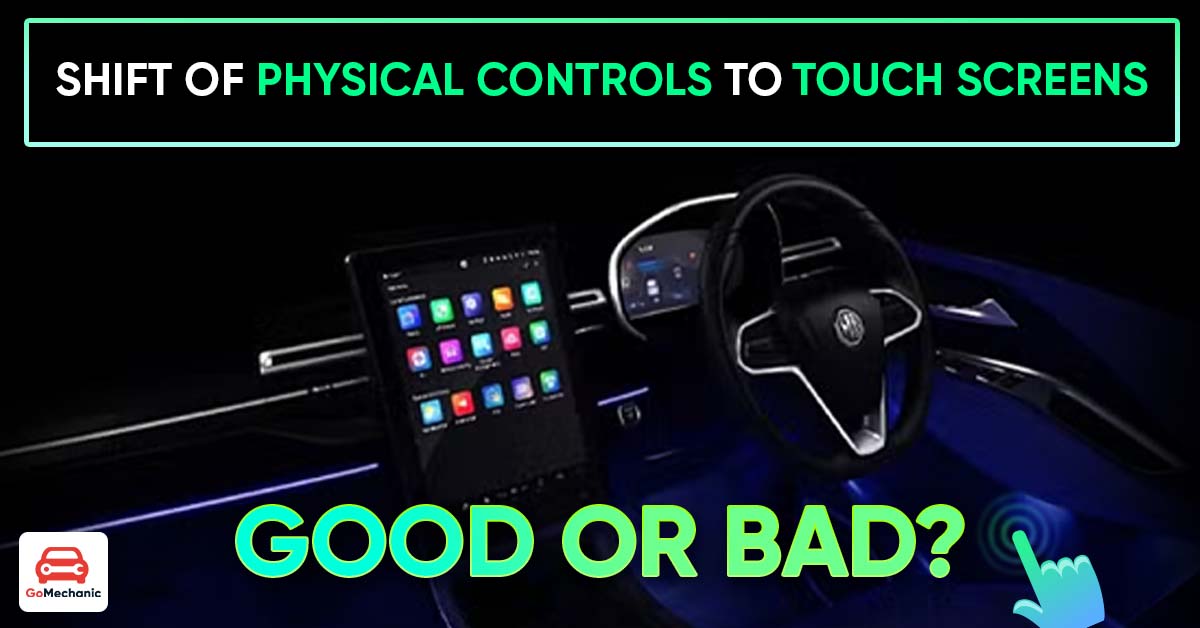The automotive industry has witnessed a remarkable change from bodily to digital controls in excess of the previous ten years. As cars develop into additional high-tech and resemble our particular gadgets like smartphones and laptops, the query emerges – are touchscreens truly much better than classic knobs and buttons? This discussion is not about mere aesthetics but encompasses person desire, protection, and the seamless integration of at any time-evolving technologies.
The argument for actual physical controls
Actual physical controls, like knobs and buttons, present a common, tactile expertise. Their situation remains mounted, allowing for the driver to memorize their areas, developing what is identified as ‘muscle memory.’ With time, the driver can change the air-conditioning or alter the radio station without taking their eyes off the road.
Physical controls give consistency, a perception of certainty. They also provide carmakers with a one of a kind chance to differentiate by themselves, imbuing their interiors with a specific look and experience. For illustration, Audi is regarded for its fulfilling ‘clicking’ seem when utilizing inside buttons, while Bentley’s optional ‘Diamond Knurling’ specification adds a touch of luxurious to its cars’ controls.
Even so, the comfort and familiarity of actual physical controls come with a probable downside – clutter. With an expanding amount of adjustable settings and capabilities, dashboards hazard becoming overpopulated with knobs and buttons, as noticed in older Porsche Macan and Panamera designs.
The situation for touchscreen controls
On the other finish of the spectrum, touchscreen controls provide a modern, contemporary look reminiscent of our preferred digital devices. By integrating many controls within just a single central exhibit, designers can make cleanse, uncluttered interiors. The Volkswagen Golfing Mk8 stands as an outstanding example of how contact controls can streamline inside style.
In addition to aesthetic rewards, touchscreens open up up possibilities for ground breaking capabilities. The ‘smart’ local weather control feature in new VW models, providing presets like ‘warm feet’ and ‘clear windows’, wouldn’t be probable with conventional knobs and buttons.
However, the principal obstacle with touchscreen interfaces is the deficiency of a physical reference issue, which can divert the driver’s awareness from the street. This concern is generally magnified by inadequate consumer interface structure or slow method reaction periods.
Tesla has tackled this difficulty effectively, pairing a rapid CPU with a user-welcoming interface that has vital controls in a set situation for quick entry. This set up reveals how touchscreens, when executed accurately, can deliver an excellent consumer expertise.

The center floor: Combining bodily and contact controls
Some automakers have opted for a hybrid solution, mixing bodily and touchscreen controls. Volkswagen’s facelifted types, for instance, attribute a ‘touch slider’ strategy for air-conditioning controls. Likewise, Volvo integrates climate controls inside of a touchscreen, retaining a knob for volume and tunes command. Mercedes-Benz’s most recent products also undertake this tactic, incorporating key controls inside of a substantial touchscreen.
The future of motor vehicle controls: Voice Help
As voice assistant engineering advancements, the discussion about physical as opposed to touchscreen controls may well come to be redundant. In-crafted Google Assistant in Polestar designs and Siri or Google Assistant performance in Apple CarPlay and Android Car are indicative of this craze. Voice assistants can supply a risk-free and intuitive way to operate car controls, possibly pointing toward the long run of car or truck person interfaces.
Our Acquire
As the discussion in excess of physical compared to touchscreen controls carries on, one thing is very clear – there is no ‘one-dimensions-matches-all’ reply. Brands want to think about their goal audience’s preferences, safety, performance, and all round driving working experience when designing their cars’ interiors.
While some drivers may well want the tactile responses of a knob or button, some others could enjoy the modern-day aesthetic and multi-functionality of a touchscreen. And as voice assistants turn out to be additional advanced, the landscape of car or truck controls will go on to evolve, shaping the way we interact with our cars.
Finally, the goal must be to provide an intuitive, consumer-pleasant expertise that improves driving safety and pleasure, irrespective of regardless of whether it’s by a button, a touchscreen, or a voice command. The journey from knobs to screens in vehicles is a lot more than just a change in technology it’s about the evolution of person encounter in the automotive entire world.
